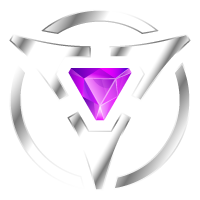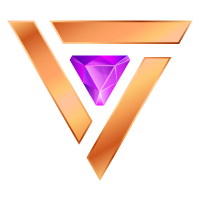The Xbox Series and PS5 are four years old this week, and it has me wondering about the state of the current console generation. It kind of feels like it's never full started due to the continued support for last-gen systems. What are your thoughts on where things stand with consoles?
You are using an out of date browser. It may not display this or other websites correctly.
You should upgrade or use an alternative browser.
You should upgrade or use an alternative browser.
What are your thoughts on the current console generation?
- Thread starter Mike Straw
- Start date
Nukumizu007
Registered
I would say personally I am having a blast because i skipped the PS4 generation all together and I did not even have a good pc at that time so I have so many games to play that current games don't matter to me that much, but what they are doing is wrong why the old consoles are still being supported is something i can't understand and stop with the remakes already everyone is just betting on safe games and not trying to make new games and innovate. The next console generation even if it comes in like 3-4 years would be a disaster depending on how 2025 goes either 2025 to 2029 need to be packed with awesome games or Ps6 and X Box whatever will be the lowest selling consoles of all time
The constant remakes and remasters frustrate me too. Studios are afraid to try something new because of money, and this is what we get. Or we get games that no one asked for in an oversaturated genreNot good enough. All we getting are remakes and remasters with a good new game from time to time
They also need to let go of last-gen
Sir Guts
Registered
Spot on. This is why I tend to support devs that are courageous enough to introduce new IPsThe constant remakes and remasters frustrate me too. Studios are afraid to try something new because of money, and this is what we get. Or we get games that no one asked for in an oversaturated genre
Ghost of Tsushima is one of them
It's why I'm a major supporter of Indie games. Just so many great ones out there that deserve attentionSpot on. This is why I tend to support devs that are courageous enough to introduce new IPs
Ghost of Tsushima is one of them
Waiting on 2025 for big releases. Don't play Xbox, so can't speak to that, but so far PS5 has been by far the least used console I've ever bought gen for gen. It has been extremely slow and rather disappointing in terms of game output.
Sir Guts
Registered
I’ve been heavily invested in indie games for the last 7-8 years. The experiences they offer are truly magnificentIt's why I'm a major supporter of Indie games. Just so many great ones out there that deserve attention
Nukumizu007
Registered
I would say the opposite the hardware is awesome but the games aren't increadible enough they are mostly safe betsIncredible games but the hardware is not being utilised properly.
Jivesh
Registered
I agree that hardware is awesome. I'm just saying that its not being utilised properly. We're getting games that render sometimes below 720p just to push resolution or fidelityI would say the opposite the hardware is awesome but the games aren't increadible enough they are mostly safe bets
Nukumizu007
Registered
You are right but what i think is a bigger problem is first of all the hord of remakes then the new games for example GOW Ragnarok was nice but extremely open ended and could have been better same with Spider Man 2.I agree that hardware is awesome. I'm just saying that its not being utilised properly. We're getting games that render sometimes below 720p just to push resolution or fidelity
Jivesh
Registered
I'm fine with remakes so long as they make sense (Horizon, TLOU don't).You are right but what i think is a bigger problem is first of all the hord of remakes then the new games for example GOW Ragnarok was nice but extremely open ended and could have been better same with Spider Man 2.
My issue with Spider-Man is that they played it too safe.
P
peter42O
Guest
The current generation for me has been excellent overall. Xbox Series X (primary) will go down as the best in their history while PlayStation 5 could surpass PlayStation 4 for me since the exclusives have been better overall (have rated my completed games an 8.0/10 or higher) which for a secondary gaming console would be amazing. Outside of 2021/2022 having a few months gap of no new games that I was interested in, I don't have any negatives, complaints or issues.
The current console generation, led by the PlayStation 5 (PS5), Xbox Series X|S, and Nintendo Switch (still relevant due to its innovative approach and rumored successor), reflects a transformative era in gaming. Here's a breakdown of my thoughts:
1. Hardware Advancements
- Performance Leap:
The PS5 and Xbox Series X have brought 4K gaming, ray tracing, and fast SSDs, drastically reducing load times and enhancing graphical fidelity. Games now feel more immersive than ever. - Xbox Series S:
A budget-friendly option offering next-gen features at a lower cost. It’s great for casual gamers but faces criticism for being less powerful, which might limit its longevity. - Nintendo Switch's Position:
While not technically "next-gen," the Switch’s portability and unique game library keep it relevant. Speculation about a Switch 2 excites fans.
2. Game Libraries and Exclusives
- PS5 Dominance in Exclusives:
Titles like Demon’s Souls, Horizon Forbidden West, God of War: Ragnarök, and Spider-Man 2 have solidified Sony's reputation for delivering high-quality single-player experiences. - Xbox Game Pass Revolution:
Microsoft's focus on Game Pass has shifted the paradigm from exclusives to accessibility, offering an expansive library of games at a low cost. Acquisitions like Bethesda and Activision Blizzard promise exclusive content down the line. - Nintendo’s Evergreen Hits:
The Legend of Zelda: Tears of the Kingdom and Metroid Prime Remastered have reinforced Nintendo’s strength in first-party titles, though the aging hardware shows its limits.
3. Cloud Gaming and Subscription Services
- Xbox Cloud Gaming and PS Plus Expansion:
Cloud gaming has gained traction, making high-quality games accessible on lower-end devices. However, infrastructure and latency issues still pose challenges for many regions. - Shift to Digital and Subscription Models:
Digital game sales now outpace physical copies, and subscription services like Xbox Game Pass, PS Plus, and EA Play are redefining how players access and enjoy games.
4. Challenges Faced
- Hardware Availability:
Early in the generation, supply chain issues and chip shortages made consoles hard to find. This issue is easing, but it slowed the adoption curve. - Cross-Gen Development:
Many games are still designed for both last-gen and current-gen consoles, limiting the full potential of new hardware. - Rising Costs:
The price of games has increased to $70, raising debates about affordability, especially alongside subscription services.
5. The Future of the Generation
- Mid-Gen Upgrades:
Rumors about a PS5 Pro and updated Xbox hardware suggest continued innovation. - Sustainability:
There’s a push toward energy efficiency and reducing e-waste, as seen with modular or cloud-driven solutions. - Emerging Technologies:
AI integration, VR/AR advancements (like the PS VR2), and metaverse developments could redefine interactivity.
I believe this generation truly blurs the line between console and PC gaming, particularly with the integration of cloud services and cross-platform accessibility!The current console generation, led by the PlayStation 5 (PS5), Xbox Series X|S, and Nintendo Switch (still relevant due to its innovative approach and rumored successor), reflects a transformative era in gaming. Here's a breakdown of my thoughts:
1. Hardware Advancements
- Performance Leap:
The PS5 and Xbox Series X have brought 4K gaming, ray tracing, and fast SSDs, drastically reducing load times and enhancing graphical fidelity. Games now feel more immersive than ever.- Xbox Series S:
A budget-friendly option offering next-gen features at a lower cost. It’s great for casual gamers but faces criticism for being less powerful, which might limit its longevity.- Nintendo Switch's Position:
While not technically "next-gen," the Switch’s portability and unique game library keep it relevant. Speculation about a Switch 2 excites fans.2. Game Libraries and Exclusives
- PS5 Dominance in Exclusives:
Titles like Demon’s Souls, Horizon Forbidden West, God of War: Ragnarök, and Spider-Man 2 have solidified Sony's reputation for delivering high-quality single-player experiences.- Xbox Game Pass Revolution:
Microsoft's focus on Game Pass has shifted the paradigm from exclusives to accessibility, offering an expansive library of games at a low cost. Acquisitions like Bethesda and Activision Blizzard promise exclusive content down the line.- Nintendo’s Evergreen Hits:
The Legend of Zelda: Tears of the Kingdom and Metroid Prime Remastered have reinforced Nintendo’s strength in first-party titles, though the aging hardware shows its limits.3. Cloud Gaming and Subscription Services
- Xbox Cloud Gaming and PS Plus Expansion:
Cloud gaming has gained traction, making high-quality games accessible on lower-end devices. However, infrastructure and latency issues still pose challenges for many regions.- Shift to Digital and Subscription Models:
Digital game sales now outpace physical copies, and subscription services like Xbox Game Pass, PS Plus, and EA Play are redefining how players access and enjoy games.4. Challenges Faced
- Hardware Availability:
Early in the generation, supply chain issues and chip shortages made consoles hard to find. This issue is easing, but it slowed the adoption curve.- Cross-Gen Development:
Many games are still designed for both last-gen and current-gen consoles, limiting the full potential of new hardware.- Rising Costs:
The price of games has increased to $70, raising debates about affordability, especially alongside subscription services.5. The Future of the Generation
- Mid-Gen Upgrades:
Rumors about a PS5 Pro and updated Xbox hardware suggest continued innovation.- Sustainability:
There’s a push toward energy efficiency and reducing e-waste, as seen with modular or cloud-driven solutions.- Emerging Technologies:
AI integration, VR/AR advancements (like the PS VR2), and metaverse developments could redefine interactivity.
The PlayStation 5 and Xbox Series X|S have been out for four years now, but it still feels like the era hasn't quite kicked off, especially considering the last-gen consoles haven't quite kicked off yet. By the way, while looking for some new games, I came across https://casinosanalyzer.com/no-deposit-bonuses an interesting resource about online bonuses for online games. Anyway, do you think the PS5/Xbox Series is really mature, or is there still a long way to go?
Last edited:
AshleyWilliams
New User
I don't like that this generation of console is so weak and bad optimised. I have bought PS5 and SW2 system. The price is so really high that I switched back to PC
Aurilis
Registered
Sony’s single-player lineup is carrying hard, Xbox is basically betting the whole farm on Game Pass, and Nintendo is just doing its own thing as always and somehow still winningThe current console generation, led by the PlayStation 5 (PS5), Xbox Series X|S, and Nintendo Switch (still relevant due to its innovative approach and rumored successor), reflects a transformative era in gaming. Here's a breakdown of my thoughts:
1. Hardware Advancements
- Performance Leap:
The PS5 and Xbox Series X have brought 4K gaming, ray tracing, and fast SSDs, drastically reducing load times and enhancing graphical fidelity. Games now feel more immersive than ever.- Xbox Series S:
A budget-friendly option offering next-gen features at a lower cost. It’s great for casual gamers but faces criticism for being less powerful, which might limit its longevity.- Nintendo Switch's Position:
While not technically "next-gen," the Switch’s portability and unique game library keep it relevant. Speculation about a Switch 2 excites fans.2. Game Libraries and Exclusives
- PS5 Dominance in Exclusives:
Titles like Demon’s Souls, Horizon Forbidden West, God of War: Ragnarök, and Spider-Man 2 have solidified Sony's reputation for delivering high-quality single-player experiences.- Xbox Game Pass Revolution:
Microsoft's focus on Game Pass has shifted the paradigm from exclusives to accessibility, offering an expansive library of games at a low cost. Acquisitions like Bethesda and Activision Blizzard promise exclusive content down the line.- Nintendo’s Evergreen Hits:
The Legend of Zelda: Tears of the Kingdom and Metroid Prime Remastered have reinforced Nintendo’s strength in first-party titles, though the aging hardware shows its limits.3. Cloud Gaming and Subscription Services
- Xbox Cloud Gaming and PS Plus Expansion:
Cloud gaming has gained traction, making high-quality games accessible on lower-end devices. However, infrastructure and latency issues still pose challenges for many regions.- Shift to Digital and Subscription Models:
Digital game sales now outpace physical copies, and subscription services like Xbox Game Pass, PS Plus, and EA Play are redefining how players access and enjoy games.4. Challenges Faced
- Hardware Availability:
Early in the generation, supply chain issues and chip shortages made consoles hard to find. This issue is easing, but it slowed the adoption curve.- Cross-Gen Development:
Many games are still designed for both last-gen and current-gen consoles, limiting the full potential of new hardware.- Rising Costs:
The price of games has increased to $70, raising debates about affordability, especially alongside subscription services.5. The Future of the Generation
- Mid-Gen Upgrades:
Rumors about a PS5 Pro and updated Xbox hardware suggest continued innovation.- Sustainability:
There’s a push toward energy efficiency and reducing e-waste, as seen with modular or cloud-driven solutions.- Emerging Technologies:
AI integration, VR/AR advancements (like the PS VR2), and metaverse developments could redefine interactivity.
-
This site uses cookies to help personalise content, tailor your experience and to keep you logged in if you register.
By continuing to use this site, you are consenting to our use of cookies.



